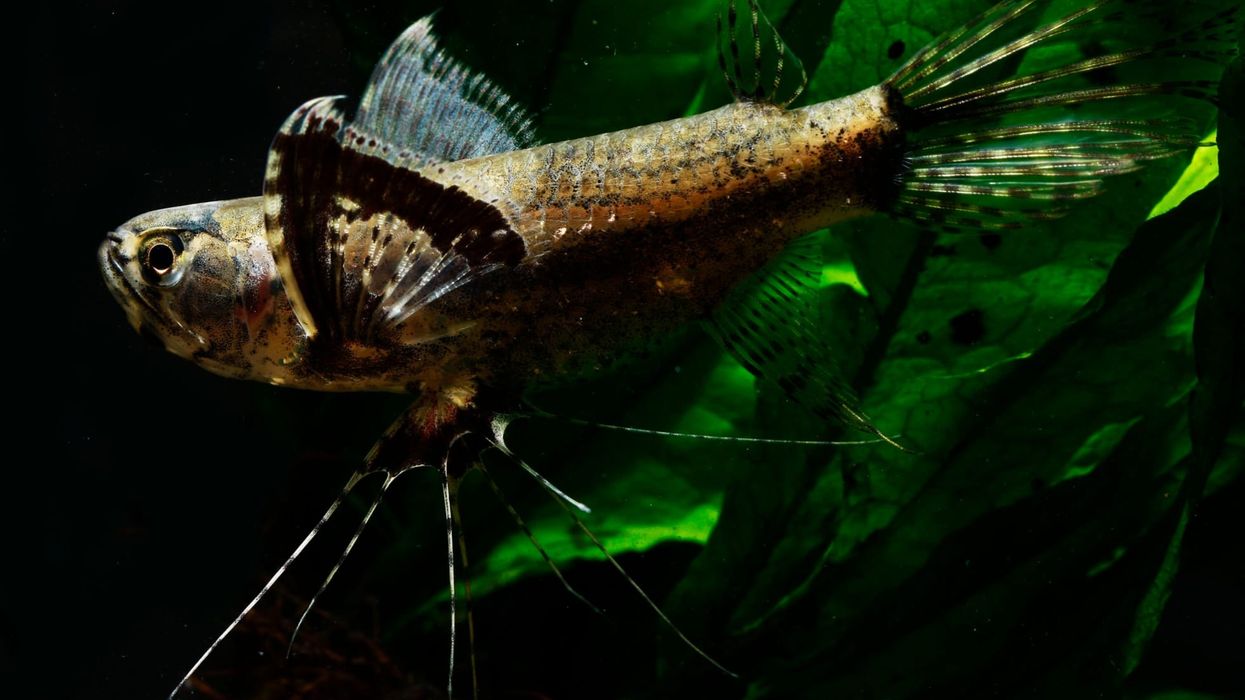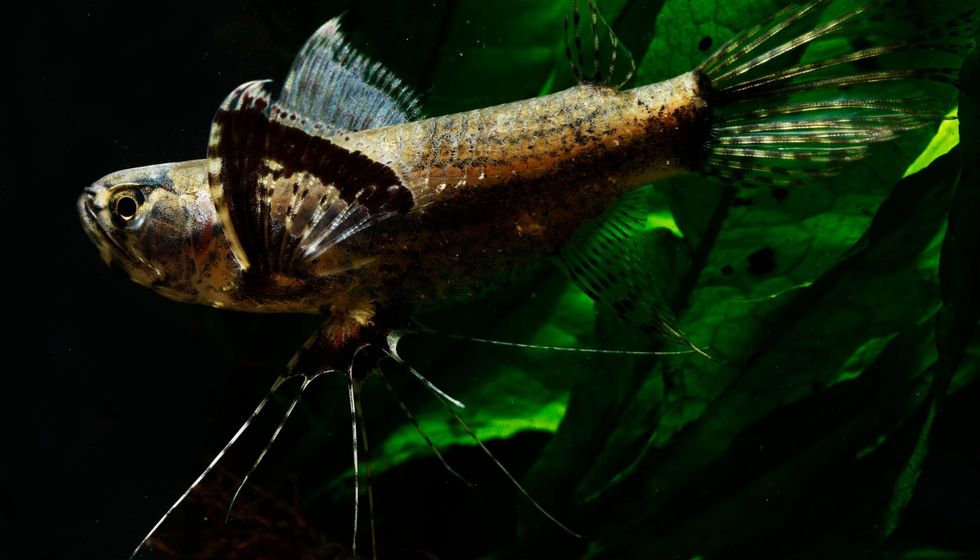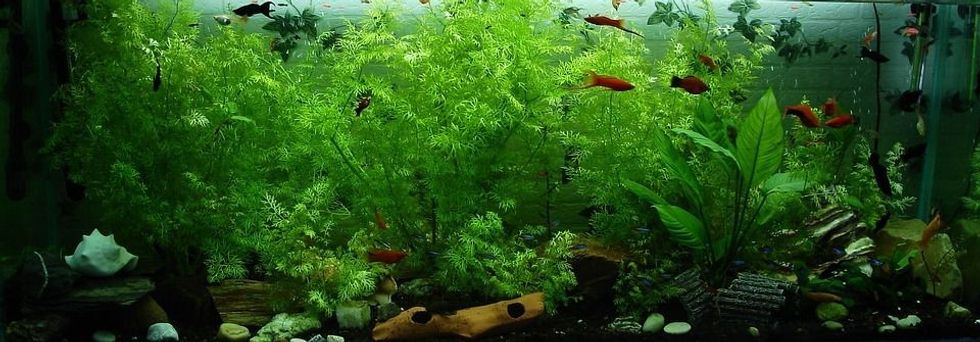Fun Freshwater Butterflyfish Facts For Kids

Content
- What type of animal is a freshwater butterflyfish?
- What class of animal does a freshwater butterflyfish belong to?
- How many freshwater butterflyfish are there in the world?
- Where does a freshwater butterflyfish live?
- What is a freshwater butterflyfish's habitat?
- Who does freshwater butterflyfish live with?
- How long does a freshwater butterflyfish live?
- How do they reproduce?
- What is their conservation status?
- What do freshwater butterflyfish look like?
- How cute are they?
- How do they communicate?
- How big is a freshwater butterflyfish?
- How fast can a freshwater butterflyfish swim?
- How much does a freshwater butterflyfish weigh?
- What are the male and female names of the species?
- What would you call a baby freshwater butterflyfish?
- What do they eat?
- Are they dangerous?
- Would they make a good pet?
- Did you know...
- Can angelfish live with butterflyfish?
- Why are butterflyfish called butterflyfish?
The freshwater butterflyfish (Pantodon buchholzi) is also known as the African butterflyfish. These are native to Africa occupying a wide range of water bodies.
This fish species belongs to the order Osteglossiformes and the family Pantodontidae. This species of fish is usually confused with saltwater butterflyfish, but they are not closely related. The freshwater butterfly fish is the only member of this family.
They are carnivorous and always capture prey at the surface. This fish is widely distributed across large water bodies in West Africa. They can jump and glide for a short period above the water's surface to escape predators.
Due to this ability, they were named freshwater butterflyfish. This species is quick and agile, making them top predators.
Even though this species has been around for a long time, they were officially approved in 1905. They have survived all kinds of environmental changes without any modification or effect on distribution to date.
They are also referred to as living fossils. They also do well alone and in a community tank with appropriate conditions. Arowanas and bony-tongue fishes are distant relatives of freshwater butterflyfish.
Read some amazing facts on Redear sunfish and Pilchards.
Freshwater Butterflyfish Interesting Facts
What type of animal is a freshwater butterflyfish?
The African butterflyfish (Pantodon buchholzi) is also called a dragonfish and is a trained surface feeder. They can also breathe in the air like us.
It is their vasculature swim bladder that administers buoyancy and exchange of gas while they are on the surface of the water. They feed on anything with high protein. This freshwater fish does not do well with their kind in an aquarium.
They also do not move around a lot and they stay in the same place near the surface to catch prey. They can sometimes be aggressive.
What class of animal does a freshwater butterflyfish belong to?
Freshwater butterflyfish (Pantodon buchholzi) belong to the Actinopterygii class of animals.
How many freshwater butterflyfish are there in the world?
The freshwater fish species are mainly found in large water bodies and their number is increasing. There is no data available on the exact number of these fish.
Where does a freshwater butterflyfish live?
The African butterfly fish (Pantodon buchholzi) is found mainly in West African water bodies. They live in Nigeria, Cameroon, and Zaire. They are found in the lower Niger, Lake Chad, Congo Basin, upper Zambezi, and Ogooue. This fish also inhabits the Lower Cross River and the Niger Delta.
What is a freshwater butterflyfish's habitat?
The distribution of this African butterfly fish is across water bodies with slightly acidic and slow water movement. The habitat of these fish includes a high amount of foliage that floats to the surface of the water. They also occupy creeks, lakes, and swamps with floating plants.
The water temperature is 73-86 F (23-30 C). Freshwater butterflyfish are found in areas with submerged and overhanging vegetation. These fish can camouflage well in these regions.
Who does freshwater butterflyfish live with?
The African butterfly fish live both on their own and in pairs.
How long does a freshwater butterflyfish live?
The African butterfly fish's lifespan is five years. They can also live longer in an aquarium with proper conditions and nutrition.
How do they reproduce?
It is quite a task to breed this fish species in captivity. It is necessary to move the breeding pair into a separate fish tank and it is hard to distinguish females from males.
They require an adequate tank size with floating plants, a big surface area, and good water conditions. After setting up the natural habitat, make sure that the water temperature is 80 F (27 C). A little bit of water has to be removed to start the breeding process.
High-quality food should be fed to the breeding pair like brine shrimp, flake food, crickets, small fish, and insects. The tanks have to be left in these conditions for a few days before adding acidic water.
Males usually chase females. The spawning takes place within the plants, and the male clasps the female with his fins. After the pair starts the breeding process, the female produces three to seven eggs per pass.
By the end of the breeding season, the female produces about 200 eggs per day. The fertilization of eggs takes place internally.
Females scatter the eggs in the water body. The eggs float to the surface, and they have to be separated and kept in different tanks.
If the eggs are in the same tank, the parents might eat them. The fry hatches in four days. The fry does not hunt as they usually wait on the surface of the water.
It is difficult to raise a juvenile and they can be fed food like young brine shrimp. The water needs to be changed regularly.
What is their conservation status?
The African butterflyfish (Pantodon buchholzi) fish species are listed as Least Concern. Due to the modern-day breeding of them in captivity, their distribution in the wild has not been affected.
Freshwater Butterflyfish Fun Facts
What do freshwater butterflyfish look like?
The African butterfly fish is about 5 in (13 cm) long with large pectoral fins. They have a vascularized and large swim bladder. This swim bladder enables them to breathe air at the surface of the water.
They have well-trained eyes and upturned mouths to catch prey near the surface of the water. They use their enlarged pectoral muscle to glide on the surface of the water.
When looked at from the top, their pectoral fins resemble the wings of a butterfly. This fin also makes them look like floating plants. The fish has a brown and black patterned body and a light-colored underbelly.
This fish has orange-colored eyes placed higher up on its head. Males are slimmer than females, and the anal fin is different. The reproductive organ on the rear edge of the anal fins is a small tube formed by fin rays.
The anal fins of the female fish have a straight edge. The caudal fin is larger than the dorsal and anal fin.
The caudal and anal fin helps the fish to propel forward. These fins have dark even-spaced lines. The ventral fin resembles a thin barbel.
*Please note that this is an image of an angelfish and not a freshwater butterfly fish. If you have a royalty-free image of a freshwater butterfly fish, please let us know at hello@kidadl.com
How cute are they?
Even though this fish is mostly dark-colored, these fish species look cute because of their fins which resemble wings.
How do they communicate?
African butterflyfish communicate through their sensors. These sensors present on the skin of these fish help them to detect small disturbances or waves that are caused by insects hitting the water.
How big is a freshwater butterflyfish?
The African butterfly fish is 5.1 in (13 cm) long. In an aquarium or a tank, this fish can grow only up to 4 in (10.2 cm).
How fast can a freshwater butterflyfish swim?
An African butterflyfish (Pantodon buchholzi) can swim fast in pursuit of its food.
How much does a freshwater butterflyfish weigh?
The butterfly fish weighs 0.04-0.17 lb (0.02-0.08 kg). Females are heavier than males.
What are the male and female names of the species?
A male or female African butterfly fish has no specific name given to them.
What would you call a baby freshwater butterflyfish?
A baby African butterfly fish is referred to as fry.
What do they eat?
Butterflyfish mainly feed on insects (insectivores) that contact the surface in the wild. They also feed on a wide range of food. This fish will eat flies, crickets, spiders, and mealworms. They eat live and frozen food. It has been observed that they can adjust to pallet food and flake food.
Are they dangerous?
No, this butterflyfish is neither venomous nor poisonous.
Would they make a good pet?
With proper aquarium and tank size, this fish can be a good pet. Feeding them nutritious food like small fish, freeze-dried food, and insects like crickets, and providing them with their natural habitat in the tanks will keep them healthy.
Many professionals suggest that only experienced aquarists can handle them. They can be fussy about the tank size, habitat, or their care.
The aquarium must have a filter with a low water current. A small amount of water must be changed frequently to maintain the required water conditions.
To provide proper care, they must be in a tank size of 30-40 gal (136-182 l), the water must have a pH level of 6.5 to 7, and the water hardness should be at 1-10 KH. The flow of water should be slow.
Did you know...
Pantodon (genus) is a Greek word with two elements, 'pan' meaning 'all' and 'odon', meaning 'teeth', so it translates to 'all tooth'. ‘Buchholzi’ is the surname of the man who discovered this butterflyfish, Professor R. W. Buchholz.
As the butterfly fry starts to grow, it was observed that they show cannibalistic characteristics. The larger fry will eat their smaller siblings.
The African butterflyfish migrates to other freshwater regions.
The lids of aquariums or tanks must be tight-fitting because butterflyfish are good jumpers.
The African butterflyfish does not do well in places with cold air.
When in danger, African butterfly fish use their fins as ailerons to launch themselves from the water, rising about twice their body length
It is observed that African butterflyfish remain a lot calmer in a dark substrate.
Can angelfish live with butterflyfish?
No. African butterfly fish and angelfish do not do well as tank mates. Angelfish are mainly bred in captivity as they are difficult to catch in the wild. This fish also finds food near the surface of the water.
As tank mates, both these fish species would display aggressive behavior. Another reason is that angelfish are fin-nippers. The long-flowing fins of butterflyfish are possibly targeted by these fin-nippers
There are other suitable tank mates for butterflyfish. Their usual behavior is peaceful if their territory is not disturbed.
It is necessary to choose a tank mate for your fish, considering factors like tank size, temperament, water conditions, and fish size. It is best to keep them with similar-sized or small fish that are middle or bottom dwellers of an aquarium. Butterflyfish can be placed with barbs, gouramis, catfish, elephant fish, cories, danios, and tetras.
Why are butterflyfish called butterflyfish?
The silver brownish-green colored large pectoral fins with markings are what gave them this name. They are fan-like when viewed from the top and look like the wings of a butterfly. They are usually faced away from the surface so they are not detectable by a predator or prey.
Here at Kidadl, we have carefully created lots of interesting family-friendly animal facts for everyone to discover! Learn more about some other fishes including red mullet, or guppy.
You can even occupy yourself at home by drawing one on our freshwater butterflyfish coloring pages.
west africa
Get directionsWe Want Your Photos!
More for You
Sources
https://en.wikipedia.org/wiki/Freshwater_butterflyfish
https://www.aquariumsource.com/african-butterfly-fish
https://animal-world.com/encyclo/fresh/miscellaneous/butterfly.php
https://a-z-animals.com/animals/butterfly-fish/
See All
Bachelor of Engineering specializing in Aeronautical/Aerospace Technology, Master of Business Administration specializing in Management

Arpitha RajendraBachelor of Engineering specializing in Aeronautical/Aerospace Technology, Master of Business Administration specializing in Management
With a background in Aeronautical Engineering and practical experience in various technical areas, Arpitha is a valuable member of the Kidadl content writing team. She did her Bachelor's degree in Engineering, specializing in Aeronautical Engineering, at Nitte Meenakshi Institute of Technology in 2020. Arpitha has honed her skills through her work with leading companies in Bangalore, where she contributed to several noteworthy projects, including the development of high-performance aircraft using morphing technology and the analysis of crack propagation using Abaqus XFEM.
Bachelor of Technology specializing in Information Technology

Smriti ChaudharyBachelor of Technology specializing in Information Technology
Smriti, a student data scientist, and coder, is pursuing her Bachelor of Technology at K.J. Somaiya College of Engineering. She has achieved top rankings in the International English Olympiad, National Spelling Bee, and PSAT/SAT English Section. She is experienced in content creation and editing for various academic institutions.
Disclaimer
1) Kidadl is independent and to make our service free to you the reader we are supported by advertising. We hope you love our recommendations for products and services! What we suggest is selected independently by the Kidadl team. If you purchase using the Buy Now button we may earn a small commission. This does not influence our choices. Prices are correct and items are available at the time the article was published but we cannot guarantee that on the time of reading. Please note that Kidadl is a participant in the Amazon Services LLC Associates Program, an affiliate advertising program designed to provide a means for sites to earn advertising fees by advertising and linking to Amazon. We also link to other websites, but are not responsible for their content.
2) At Kidadl, we strive to recommend the very best activities and events. We will always aim to give you accurate information at the date of publication - however, information does change, so it’s important you do your own research, double-check and make the decision that is right for your family. We recognise that not all activities and ideas are appropriate for all children and families or in all circumstances. Our recommended activities are based on age but these are a guide. We recommend that these ideas are used as inspiration, that ideas are undertaken with appropriate adult supervision, and that each adult uses their own discretion and knowledge of their children to consider the safety and suitability. Kidadl cannot accept liability for the execution of these ideas, and parental supervision is advised at all times, as safety is paramount. Anyone using the information provided by Kidadl does so at their own risk and we can not accept liability if things go wrong.
3) Because we are an educational resource, we have quotes and facts about a range of historical and modern figures. We do not endorse the actions of or rhetoric of all the people included in these collections, but we think they are important for growing minds to learn about under the guidance of parents or guardians.







